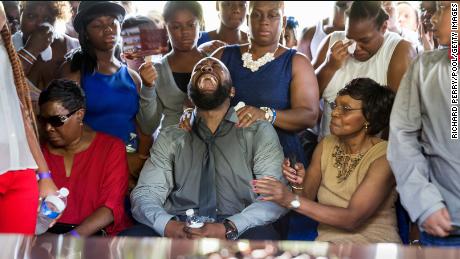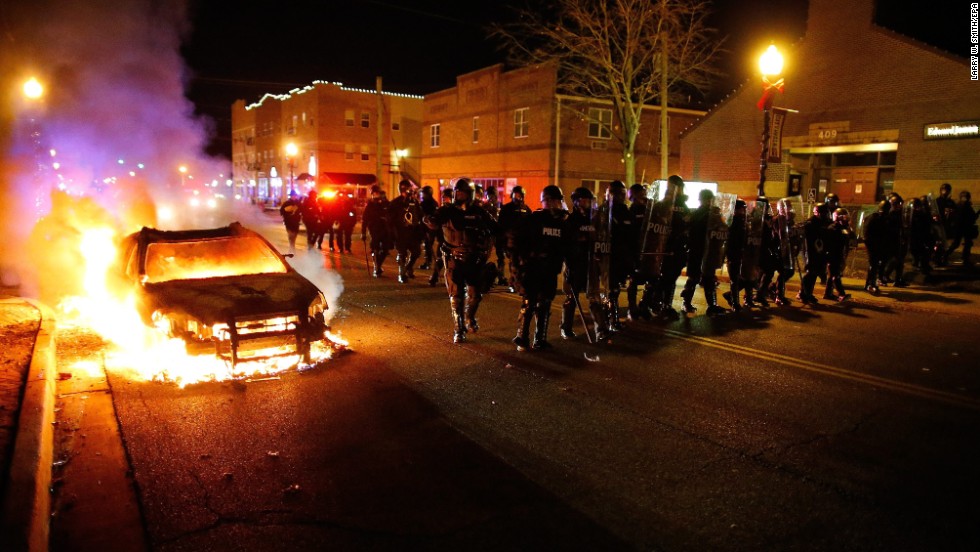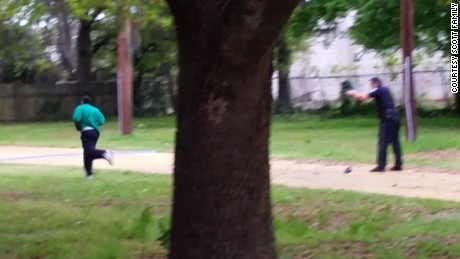Story highlights
- The Michael Brown case didn't yield criminal charges, but the Justice Department sued the city of Ferguson
- The killing of Walter Scott led to South Carolina mandating the use of police body cameras
(CNN)The protests happen with such frequency, the images seem like deja vu: Demonstrators flooding city streets, demanding an end to excessive police force and chanting "black lives matter."
But each case that spurs "black lives matter" marches has different circumstances -- and different outcomes. Here are how some high-profile cases have turned out:
Trayvon Martin, 17
Date of death: February 26, 2012
Where: Sanford, Florida
What happened: Martin was walking from a convenience store back to the home of his father's fiancee. Neighborhood watch volunteer George Zimmerman spots him from his car and calls 911, reporting "a real suspicious guy."
"This guy looks like he's up to no good, or he's on drugs or something," Zimmerman told a dispatcher. "It's raining, and he's just walking around."
A scuffle broke out, but there were no direct witnesses. Zimmerman claimed Martin attacked him, hitting him in the nose and knocking him onto the pavement. Zimmerman said he then took out his gun and shot Martin in self defense.
But critics said Zimmerman was unjustified in confronting the unarmed teen, especially since Zimmerman didn't heed a police dispatcher's advice to stop following him.
The outcomes: Zimmerman was charged with second-degree murder but was found not guilty. The acquittal ignited protests across the country, and the "Black Lives Matter" movement gained national prominence.
The case also led to the firing of Sanford Police Chief Bill Lee, who was criticized for not arresting Zimmerman after Martin was killed.
Eric Garner, 43
Date of death: July 17, 2014
Where: New York City
What happened: Police tried to arrest Garner in front of a store for allegedly selling cigarettes illegally. Garner raised both hands and told officers not to touch him. Seconds later, Officer Daniel Pantaleo grabbed the 350-pound man in a chokehold and pulled him to the sidewalk, rolling him onto his stomach.
The New York Police Department prohibits the use of chokeholds.
Garner, who had asthma, repeatedly said, "I can't breathe! I can't breathe!" while several officers restrained him on the ground. Police said he suffered a heart attack and died en route to a hospital.
The outcomes: A grand jury declined to indict Pantaleo, sparking protests and "die-ins."
Garner's death also spurred a new protest slogan: "I can't breathe," referring to some of his final words before he died. Several professional athletes wore shirts saying "I can't breathe" in silent protest.
Pantaleo offered his condolences to Garner's family and said he never intended to hurt Garner. The police union defended Pantaleo, saying he just wanted to take Garner into custody after the suspect resisted.
New York City eventually settled with Garner's family for $5.9 million. City Comptroller Scott Stringer said the settlement "acknowledges the tragic nature of Mr. Garner's death," but "the city has not admitted liability."
Michael Brown, 18
Date of death: August 9, 2014
Where: Ferguson, Missouri
What happened: Brown was walking with a friend in the middle of a street when Ferguson Police Officer Darren Wilson approached them and told them to walk on the sidewalk.
After that, the narratives varied enormously. Authorities said Brown had attacked the officer in his car and tried to take his gun. Others said the teenager was surrendering, his hands in the air to show he was unarmed, when the officer opened fire. Documents showed that Wilson fired his gun 12 times.
The outcomes: A grand jury decided not to indict Wilson -- leading to heated and sometimes violent protests in Ferguson and across the country.
A few days later, Officer Wilson resigned from the Ferguson Police Department.
Despite the lack of criminal charges, the Michael Brown case launched a series of reforms. A federal investigation revealed a pattern of abuse by Ferguson's mostly white police force against the city's majority black residents.
The Justice Department found that "many officers" apparently viewed some of the city's black residents "less as constituents to be protected than as potential offenders and sources of revenue."
Black residents were ticketed and cited for minor violations at a higher rate than white residents, the Justice Department said. The investigation also found a spate of racist emails sent by some police and court officials.
After the scathing Justice Department report, Ferguson police Chief Thomas Jackson resigned.
And in February, the Justice Department sued Ferguson to force police reform in the city.
Walter Scott, 50
Date of death: April 4, 2015
Where: North Charleston, South Carolina
What happened: Officer Michael Slager pulled Scott over for a broken taillight. Scott bolted out of his car, though it's not clear why. His family attorney speculated that Scott's flight stemmed from his unpaid child support "and a fear of maybe going back (to jail)."
As Scott ran away from the officer, a witness captured video of Slager shooting Scott several times in the back.
The outcomes: The North Charleston Police Department fired Slager, and a grand jury indicted him on a state murder charge.
A federal grand jury also indicted Slager for misleading investigators and violating Scott's civil rights.
After Scott's death, the South Carolina Legislature passed a bill mandating the use of police body cameras.
And the North Charleston City Council agreed to a $6.5 million settlement with Scott's family.
Freddie Gray, 25
Date of death: April 19, 2015, seven days after he was fatally injured
Where: Baltimore
What happened: An officer on bike patrol made eye contact with Gray, and Gray fled. Police later found a knife in Gray's pocket and arrested him on a weapons charge.
Officers put Gray in a police van. At some point, Gray somehow suffered a fatal spinal cord injury. He died seven days later.
Gray's death prompted riots, looting and arson in Baltimore.
The outcomes: Six Baltimore police officers, including three black and three white officers, were charged in connection with Gray's death.
Three officers were acquitted: Edward Nero, a bike officer involved in the initial police encounter with Gray; Caesar Goodson, who drove the van; and Lt. Brian Rice, the highest-ranking officer charged in connection with Gray's death.
On July 27, 2016, prosecutors dropped charges against the three remaining officers: Garrett Miller; Alicia White and William Porter.
Aside from the criminal trials, Baltimore officials approved a $6.4 million deal to settle all civil claims tied to Gray's death.
The settlement did not "represent any judgment" on the guilt or innocence of the six police officers charged, Mayor Stephanie Rawlings-Blake said.
"This settlement represents an opportunity to bring closure to the Gray family, the community and the city."















































































































































